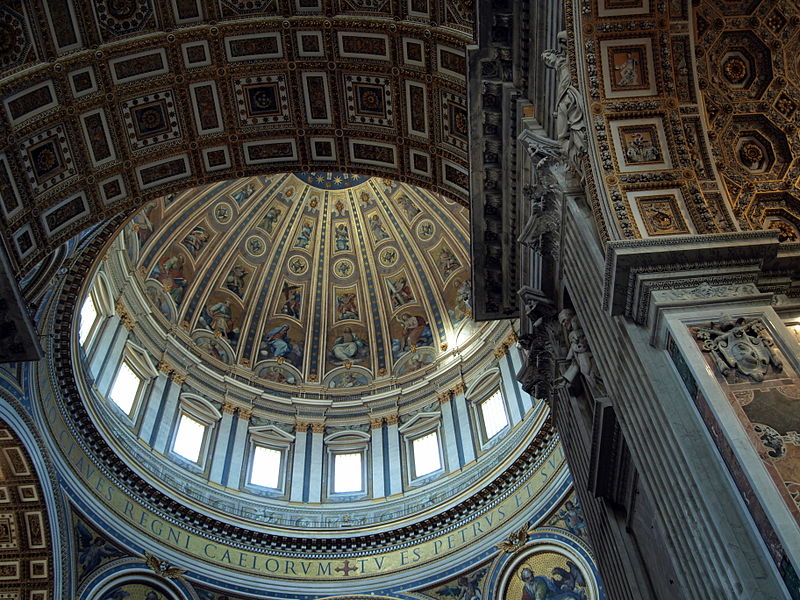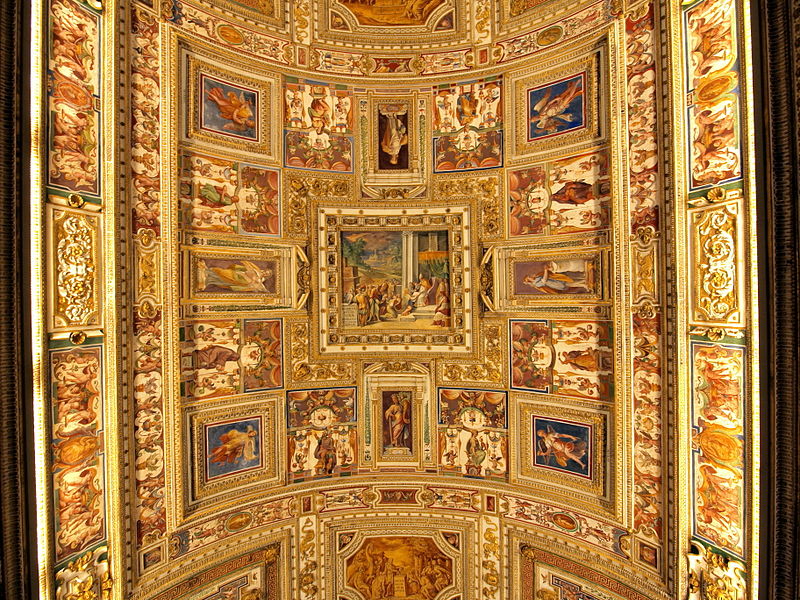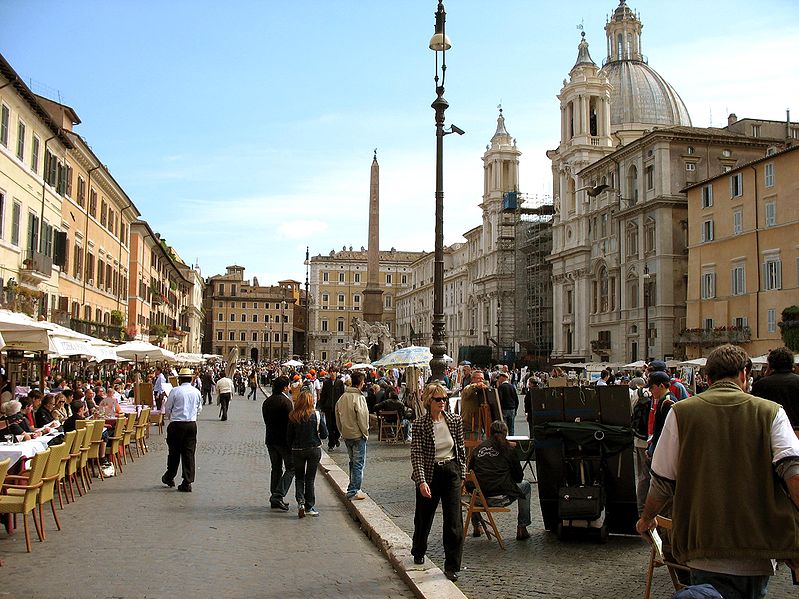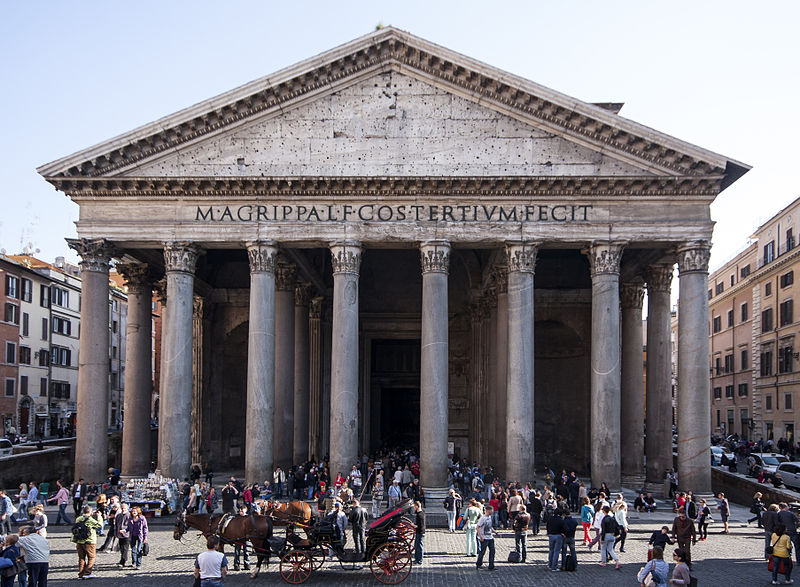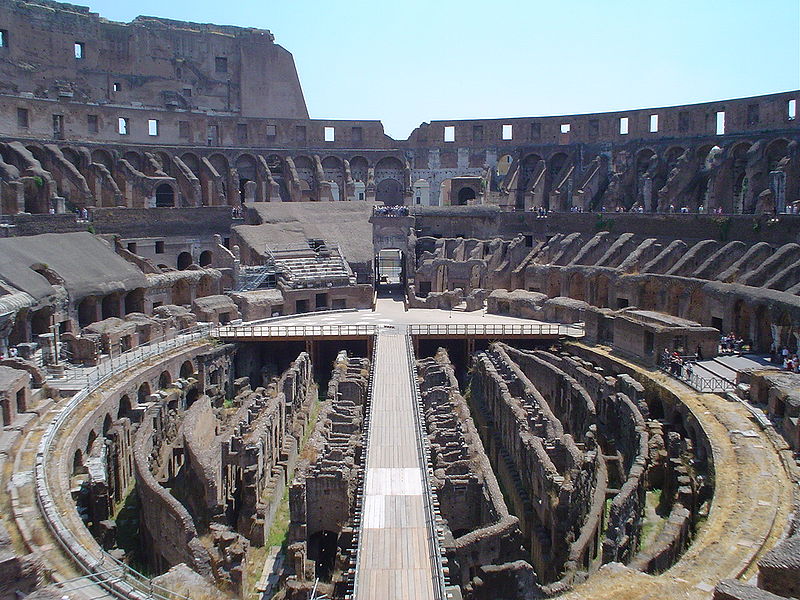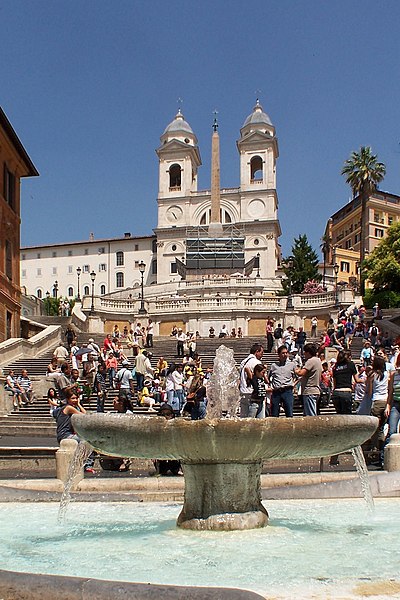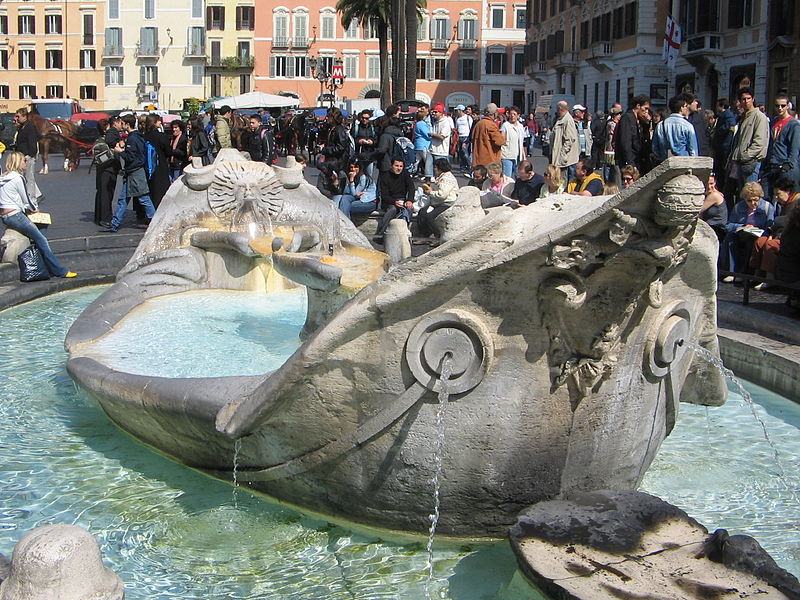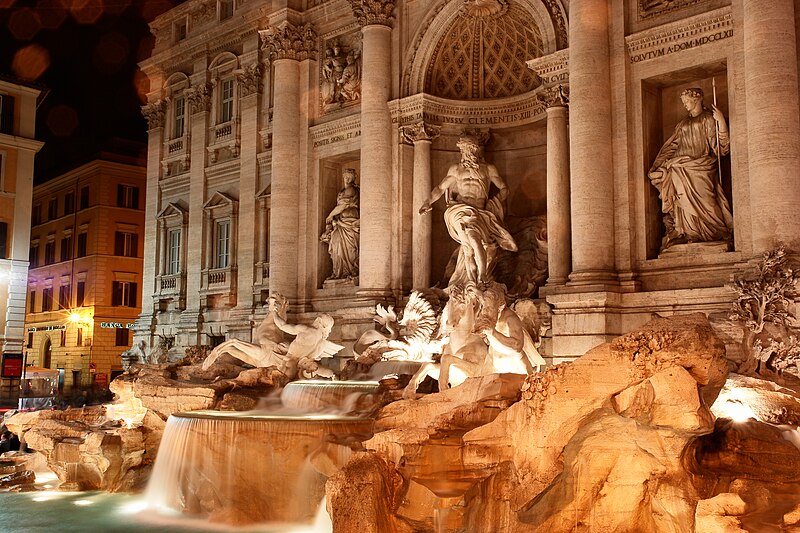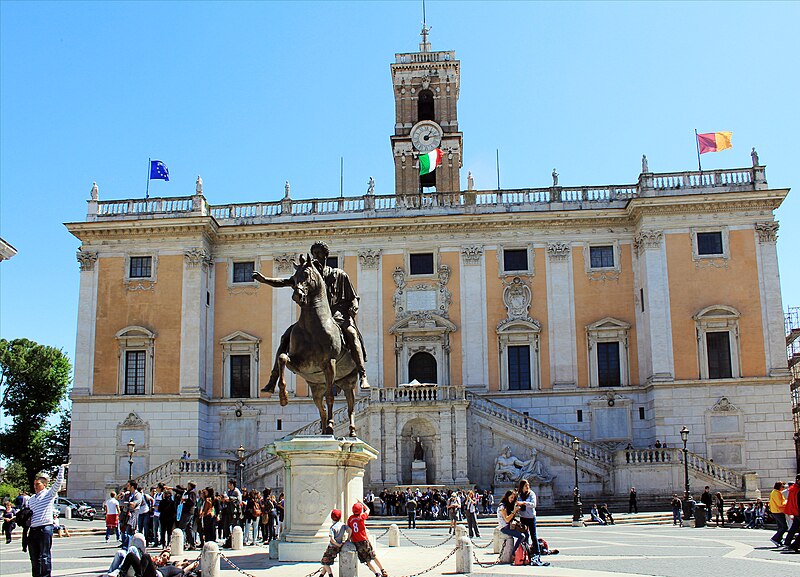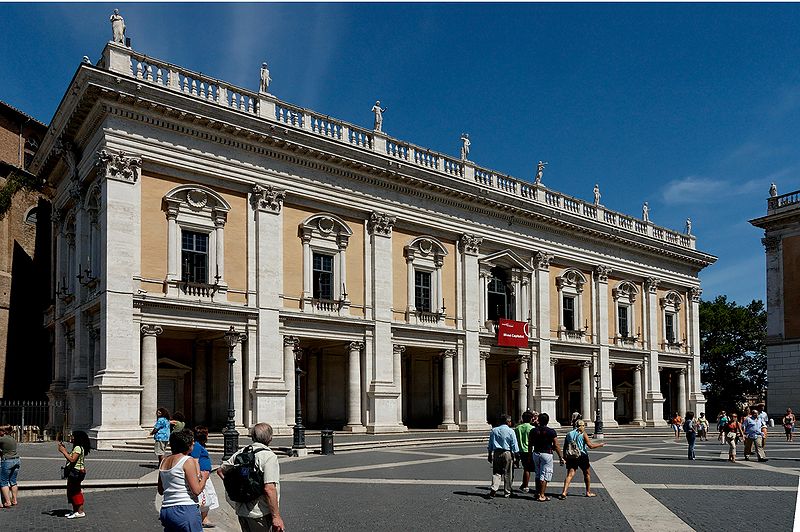The capital of Italy, Rome's history spans more than 2500 years. In ancient times, it once ruled the Western World. Many of the historical monuments are well preserved, such as the Vatican Museums and the Colosseum are among the world's most visited tourist destinations. The city's historic center is listed by UNESCO as a World Heritage Site. Rome is not just a place of the past, today the metropolis is just as lively and dynamic, it's still one of the most important cities in the world.
Città del Vaticano, Roma
St. Peter's is an Italian Renaissance church in Vatican City, the papal enclave within Rome. It is the most renowned work of Renaissance architecture and one of the largest churches in the world. Regarded as one of the holiest Catholic shrines, it is famous as a place of pilgrimage and for its liturgical functions. St. Peter's has many historical associations, with the Early Christian Church, the Protestant Reformation and so on, and with numerous artists, especially Michelangelo. As a work of architecture, it is regarded as the greatest building of its age. Vatican City is accessible by metro at Ottaviano Station.
It is a large plaza located directly in front of St. Peter's Basilica. At the centre of the square is an ancient Egyptian obelisk, erected at the current site in 1586. The square includes massive Tuscan colonnades, four columns deep, which embrace visitors in "the maternal arms of Mother Church".
The Vatican Museums display works from the immense collection built up by the Popes throughout the centuries including some of the most renowned classical sculptures and most important masterpieces of Renaissance art in the world. The museums contain roughly 70,000 works, 54 galleries, and the Sistine Chapel, with its ceiling decorated by Michelangelo. It is one of the largest museums in the world.
Built from 123 to 139 AD, Also known as the Mausoleum of Hadrianis, it is a towering cylindrical building, initially commissioned by the Roman Emperor Hadrian as a mausoleum for himself and his family. The building was later used by the popes as a fortress and castle, and is now a museum. The Castle was once the tallest building in Rome. Visitors can get a view of the Vatican City from the Castle.
The piazza is built on the site of the Stadium of Domitian, built in 1st century AD, and follows the form of the open space of the stadium. Defined as a public space in the last years of 15th century, Piazza Navona was transformed into a highly significant example of Baroque Roman architecture and art. It features important sculptural and architectural creations such as the famous Fontana dei Quattro Fiumi (Fountain of the Four Rivers), the Obelisk of Domitian, and Pamphili palace.
It is a former Roman temple, now a church, on the site of an earlier temple built during the reign of Augustus (27 BC – 14 AD). The present building was completed by the emperor Hadrian and probably dedicated about 126 AD. The building is circular with a portico of large granite Corinthian columns under a pediment. It is one of the best-preserved of all Ancient Roman buildings. It became a standard exemplar when classical styles were revived, and has been copied many times by modern architects.
Roma
It is a large complex of ruins thought to be the world's oldest shopping mall. The surviving buildings and structures, built as an integral part of Trajan's Forum and nestled against the excavated flank of the Quirinal Hill, present a living model of life in the Roman capital and a glimpse at the restoration in the city, which reveals new treasures and insights about Ancient Roman architecture.
It is a rectangular forum (plaza) surrounded by the ruins of several important ancient government buildings at the center of the city. It was for centuries the center of Roman public life: the site of triumphal processions and elections; the venue for public speeches, criminal trials, and gladiatorial matches; and the nucleus of commercial affairs. Many of the Roman kingdom's oldest and most important shrines and temples located on the Forum include the ancient former royal residence, the Regia (8th century BC), and the Temple of Vesta (7th century BC), as well as the surrounding complex of the Vestal Virgins.
The Palatine is the centremost of the Seven Hills of Rome and is one of the most ancient parts of the city. It stands 40 metres above the Roman Forum, looking down upon it on one side, and upon the Circus Maximus on the other. It is an archaeological site and contains monuments such as the Palace of Domitian, the Houses of Livia and Augustus, Temple of Apollo Palatinus and so on.
Also known as the Flavian Amphitheatre, it is an oval amphitheatre. Built of concrete and sand, it is the largest amphitheatre ever built. Construction began under the emperor Vespasian in AD 72, and was completed in AD 80 under his successor and heir Titus. The Colosseum could hold between 50,000 and 80,000 spectators. It was used for gladiatorial contests and public spectacles such as mock sea battles, animal hunts, executions, re-enactments of famous battles, and dramas based on Classical mythology.
It is a Roman Catholic titular church, best known for being the home of Michelangelo's statue of Moses, part of the tomb of Pope Julius II. Michelangelo's Moses (completed in 1515), while originally intended as part of a massive 47-statue, free-standing funeral monument for Pope Julius II, became the centerpiece of the Pope's funeral monument.
Roma
"Basilica of Saint Mary Major", it is a Papal major basilica and the largest Catholic Marian church in Rome. The present church was built under Pope Sixtus III (432–440). The mosaics found in Santa Maria Maggiore are not just incredibly beautiful works of Late Antique art; they are also one of the oldest representations of the Virgin Mary in Christian Late Antiquity. The church is accessible by metro at Termini Station.
They are a set of 135 steps climbing a steep slope, dominated by the Trinità dei Monti church at the top. It has been featured in popular media such as the 1953 film Roman Holiday. During Springtime, just before the anniversary of the foundation of Rome, part of the steps are covered by pots of azaleas.
Completed in 1762, it is the largest Baroque fountain in the city and one of the most famous fountains in the world. The fountain has appeared in several notable films, including Federico Fellini's La Dolce Vita. In the centre a robustly-modelled triumphal arch is superimposed on the palazzo façade. The centre niche or exedra framing Oceanus has free-standing columns for maximal light and shade.
Also known as the Monumento Nazionale a Vittorio Emanuele II, it is a monument built in honor of Victor Emmanuel, the first king of a unified Italy. The monument features stairways, Corinthian columns, fountains, an equestrian sculpture of Victor Emmanuel and two statues of the goddess Victoria riding on quadrigas.
The Capitoline Hill, one of the Seven Hills of Rome, was earlier known as Mons Saturnius, dedicated to the god Saturn. It contains few ancient ground-level ruins, as they are almost entirely covered up by Medieval and Renaissance palaces (now housing the Capitoline Museums) that surround a piazza, a significant urban plan designed by Michelangelo. There are several important temples built on Capitoline hill: the temple of Juno Moneta, the temple of Virtus, and the Temple of Jupiter Optimus Maximus Capitolinus.
Capitoline Museums are a single museum containing a group of art and archeological museums on top of the Capitoline Hill. The history of the museums can be traced to 1471, and since then, the museums' collection has grown to include a large number of ancient Roman statues, inscriptions, and other artifacts; a collection of medieval and Renaissance art; and collections of jewels, coins, and other items.












